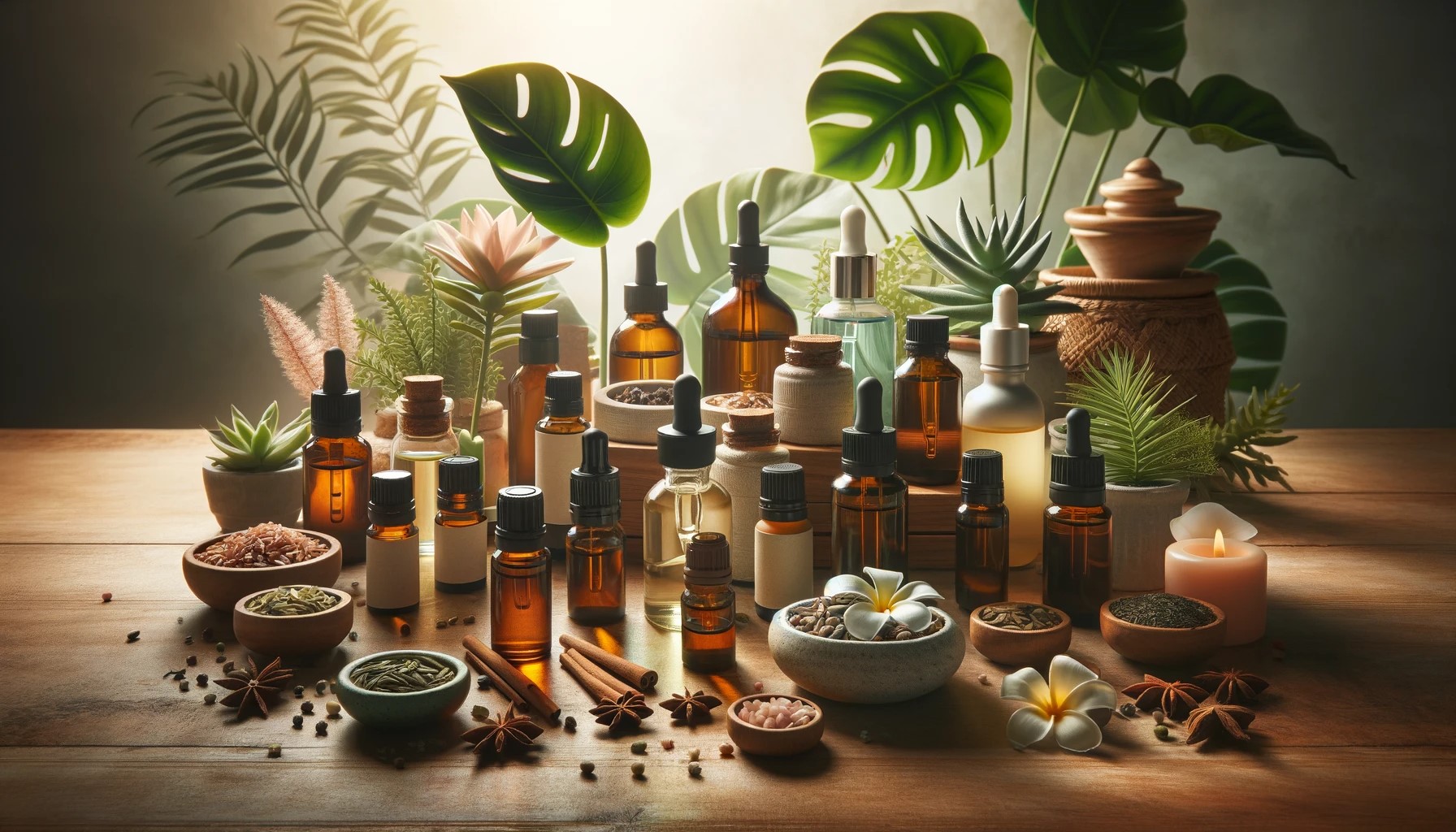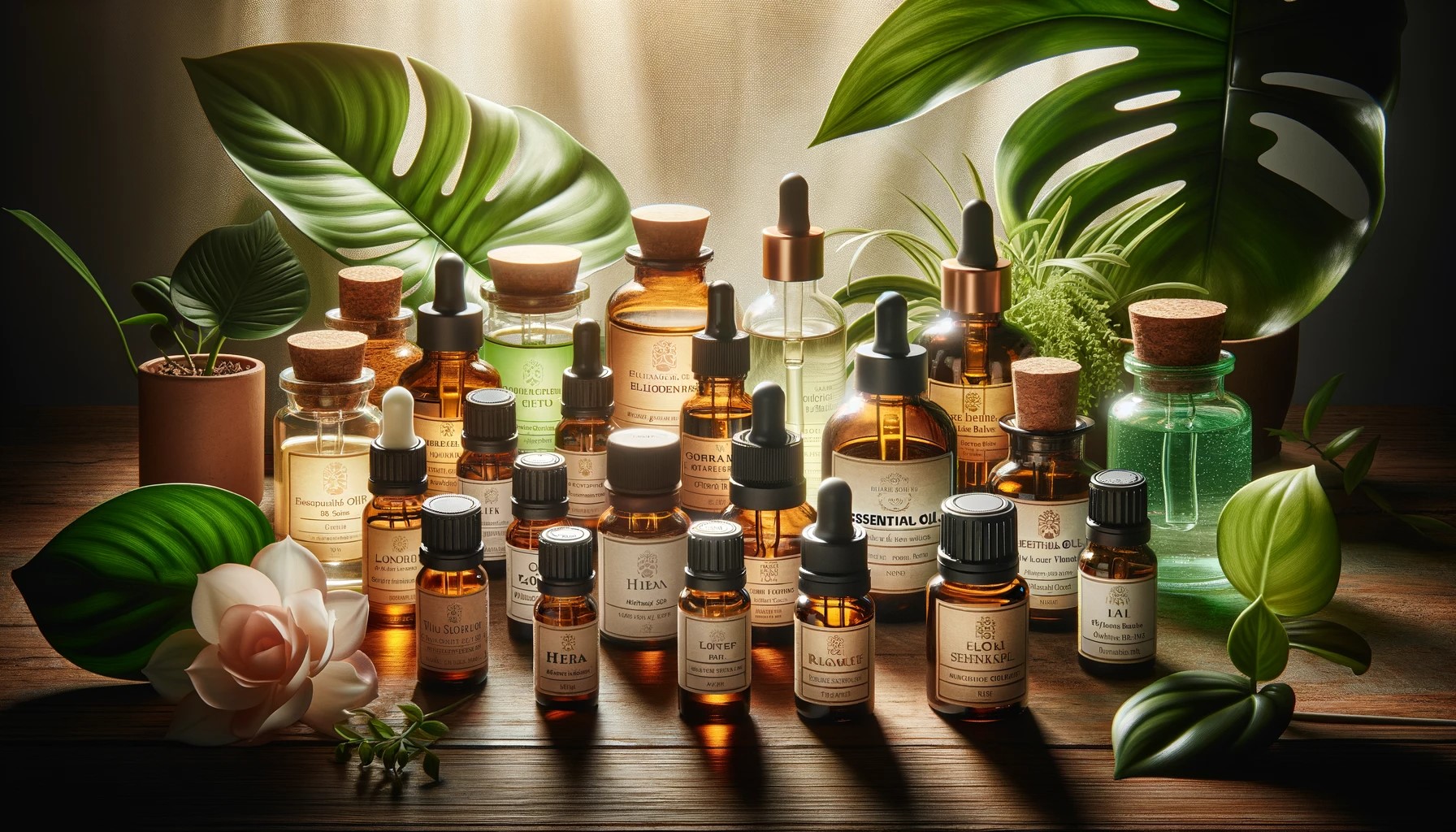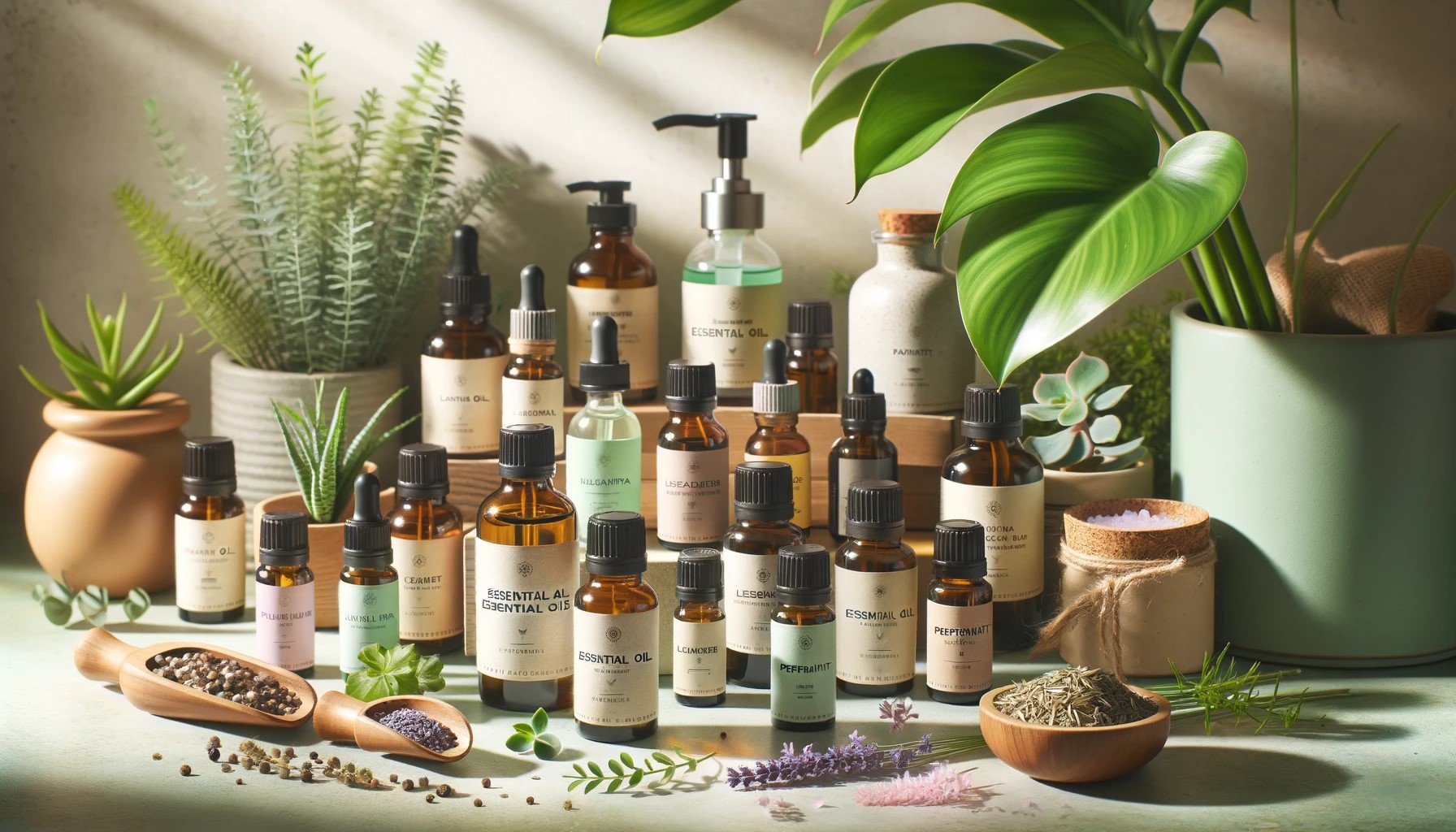Disclaimer: This article is for educational purposes only and is not intended as health or medical advice. Please consult with medical doctors and healthcare experts to determine the best approach for your individual needs.
Have you ever caught a whiff of something so fragrant that it instantly lifted your spirits or calmed your nerves? That’s the magic of essential oils at work. Each bottle contains the very essence of its source, a plant or flower—a concentrated burst of nature’s own remedies. For centuries, these oils have played a pivotal role in wellness practices, their uses ranging from the simple scenting of spaces to becoming integral components of ancient medicinal rituals. Aromatherapy taps into this age-old tradition, harnessing the power of plant scents to potentially heal the body and soothe the mind, offering the user a gentle, yet potentially powerful, approach to wellness.
The Wide-Ranging Benefits and Uses of Aromatic Oils
Like friends that come into our lives with various personalities and strengths, essential oils offer a diverse array of benefits that can touch many aspects of our lives. Picture the zesty kick of lemon brightening your mood or the serene scent of lavender easing you into a restful sleep. These oils can become personal wellness companions, aiding in everything from sharpening our focus to enveloping us with comfort during stressful times. They’re more than just a fleeting pleasure for the nostrils—the delicate power of these oils can activate our body’s own healing processes, echoing a harmony between nature and our personal wellbeing.
| Quick Fact |
| Reflecting our ancestors’ wisdom, the global popularity of aromatherapy continues to grow. A study from Grand View Research puts the global market value at a significant USD 2.8 billion in 2021, with projections showing continued growth at an 11.6% annual rate through to 2030. |
Seven Key Essential Oils and Their Uses

Immerse yourself in the essence of these seven essential oils, each with its unique character and a host of benefits that can enhance your daily life.
Lavender Oil
Lavender oil is often the first bottle to join one’s essential oil collection, known for its versatile nature and gentle, soothing properties. Have you ever longed for a peaceful end to a chaotic day or wished for help in healing a minor cut? Lavender oil might be what you’re seeking. Its reputation as a sleep promoter is well-earned, with many people finding solace in its soft floral notes as they drift off to sleep. If you’re wrangling with the discomfort of headaches or the tension of pre-menstrual syndrome, a whiff of lavender could ease your woes. And let’s not forget its use as a balm for skin irritations, such as burns or insect bites—it’s a multifaceted oil that can subtly support your body’s natural defenses against everyday stresses.
Lemon Oil
The crisp, invigorating scent of lemon oil is like a burst of sunshine on a cloudy day, awakening the senses and clearing the mind. For expectant mothers grappling with morning sickness, the citrusy aroma may provide a natural form of relief. Anyone seeking a mental boost may find lemon oil to be a valuable asset. Its zesty scent does more than just refresh; it can potentially improve concentration and bring a sense of clarity. Beyond its aromatic benefits, lemon oil plays a role in creating natural cleaning solutions, offering an environmentally friendly alternative to chemical-based products, and infusing your living space with a clean, energizing fragrance.
Peppermint Oil
Peppermint oil carries this vibrant energy, famed for its ability to uplift spirits and enhance focus. If you’re reaching for that mid-afternoon cup of coffee, consider breathing in some peppermint instead to spark your energy and improve your memory. Moreover, this minty marvel may also support digestion, making it a go-to remedy after a heavy meal or when digestive discomfort strikes. When your muscles ache, a blend of peppermint oil with a carrier oil can create a soothing salve, offering your body a natural source of relief.
Eucalyptus Oil

Eucalyptus oil is like a deep breath of fresh air in the eucalyptus groves of Australia—invigorating and purifying. For those who regularly face the challenges of respiratory conditions, eucalyptus oil can be a comforting ally, helping to alleviate the symptoms and granting a sensation of clearer breathing. Additionally, its antibacterial and antifungal properties make it a formidable foe against various skin infections. When diluted and applied topically, it can serve as a gentle but effective part of your skin health routine. To breathe in its full benefits, try adding a few drops to a warm bath or diffuser and let the clean, sharp aroma wrap you in a sense of relief and rejuvenation.
Orange Oil
Orange oil, with its sweet and bright fragrance, can act like a little drop of joy, especially when diffused on days filled with stress or pain. The citrusy aroma is not just pleasing to the senses but may also play a role in creating a more tranquil and positive atmosphere. Have you ever noticed how certain scents can transform the feel of a room? Orange oil does just that, with the added bonus of it being a natural cleaning agent. When crafting a homemade cleaner, adding orange oil can cut through grime while leaving behind a fresh, uplifting scent, turning the chores of daily life into a more enjoyable experience.
Rosemary Oil
Rosemary oil, reminiscent of the Mediterranean coasts where it’s commonly found, is abundant in both flavor and folk medicine traditions. Traditionally associated with memory, it’s no surprise that modern uses of rosemary oil include cognitive support. Imagine settling into work with a clear and focused mind, courtesy of a hint of rosemary in the air.
This oil is also celebrated for its potential to stimulate hair growth and reduce joint inflammation when applied topically after being diluted with a carrier oil. So whether seeking mental sharpness or physical comfort, rosemary oil stands out as a herbal helper, versatile enough to play a part in various aspects of our wellness routines.
Tea Tree Oil
Tea tree oil comes across as the robust defender in the essential oil family, showcasing antifungal and antibacterial properties that tackle various skin conditions with finesse. If you’ve ever been troubled by blemishes or fungal infections, you might have heard of tea tree oil as a go-to natural remedy.
Its potent action against impurities makes it invaluable in creating personal care products, such as homemade shampoos or acne treatments. The key, though, is moderation and proper dilution, as its strength is as much its asset as it is a caution. Include a little tea tree oil in your routine, and watch it work as a natural, soothing solution, bolstering your skin’s health and resilience.
Safe Usage of Essential Oils

Essential oils have a wide range of applications, from aromatherapy to skincare and beyond. However, it’s crucial to use them with care and knowledge to avoid potential risks. Let us delve into the world of essential oils and discover how to harness their power safely and effectively.
Importance of Using Carrier Oils for Topical Application
While the idea of dousing ourselves in these fragrant oils might be tempting, it is essential to recognize that their concentrated nature demands respect and caution. Carrier oils, like coconut or jojoba oil, should be your companions when applying essential oils topically. They help in dispersing the potent essences evenly and safely onto the skin, minimizing the potential for irritation or adverse reactions. Whenever we open our homes and bodies to the benefits of these botanicals, let’s do it with the care they—and we—deserve, ensuring a nurturing experience that is both enjoyable and safe.
Recommendations for Inhalation and Diffusion Methods
When we breathe in the aromatic compounds of essential oils, we’re inviting them into our personal space and body—a form of intimacy with nature that can be very beneficial. However, just as we might play our favorite song at a volume that doesn’t disturb others, we should also consider appropriate diffusion practices.
Using diffusers for a measured period, usually around 30 to 60 minutes, can envelop you in the desired therapeutic effects without overwhelming your senses. If inhalation is your preferred method, a drop or two on a handkerchief or in a steaming bowl of water can suffice. Remember, more isn’t always better—a little essential oil goes a long way.
Popular Combinations for Various Benefits
In the world of aromatherapy, certain oil combinations have garnered popularity for their synergistic effects. For a serene ambiance, you might mix lavender, chamomile, and ylang-ylang, resulting in a concoction that can help ease you into a restful state.
Seeking mental clarity? Consider blending rosemary, lemon, and peppermint for a crisp, focusing aroma. Blends can be as simple or complex as you like, with each new mixture offering a custom experience. Experimenting with different combinations allows you to explore the vast spectrum of scents and their effects, perhaps even uncovering new favorites along the way.
Final Thoughts
Reflecting on the benefits and adaptability of essential oils, it’s clear they offer more than just pleasant aromas. These potent plant extracts hold the potential to enrich our lives in a myriad of ways—soothing the mind, nurturing the body, and elevating the spirit. With the knowledge of safe application methods and blending techniques at your disposal, the world of essential oils invites you to craft a personalized and holistic wellness journey.
FAQs
Most essential oils are not safe for ingestion and should only be used topically or aromatically. Always consult with a healthcare provider before considering ingesting any essential oil.
It’s wise to perform a patch test by applying a small amount of diluted essential oil to your skin and waiting for 24 hours to observe any reactions. If you experience redness, itching, or swelling, discontinue use immediately.
Some essential oils can be toxic to pets. It’s vital to research and consult with a veterinarian before using essential oils in your home, especially if you plan to diffuse them in areas where your pets spend time.




